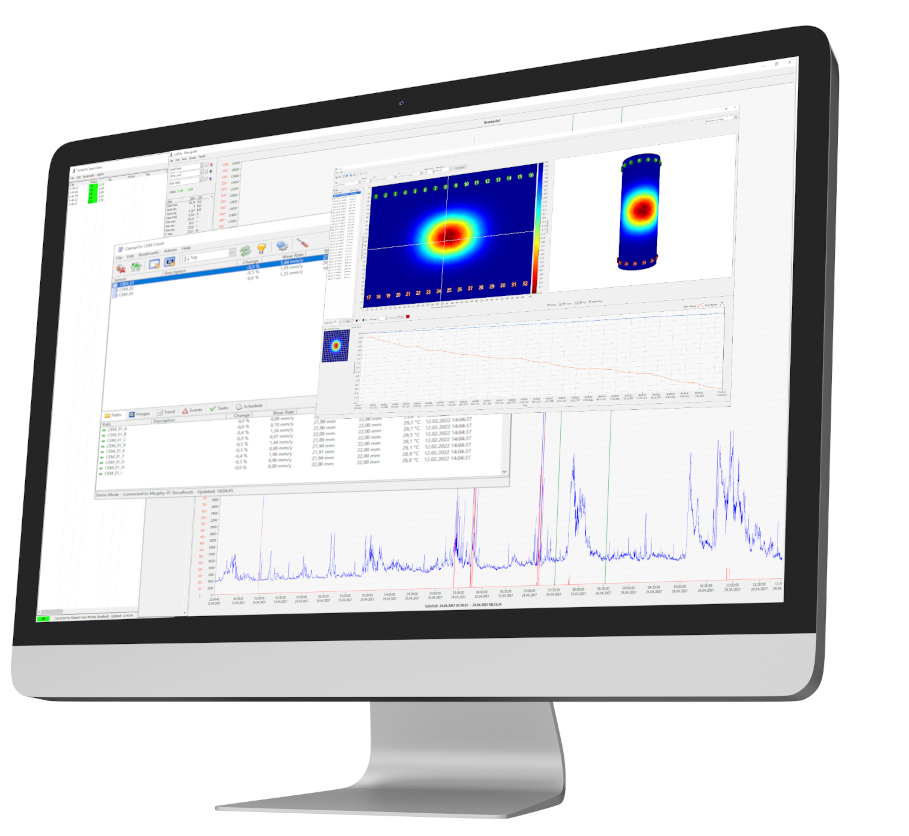ClampOn has released version 3.2 of its Corrosion-Erosion Monitoring (CEM) Software. Among the many new features and enhancements is an improved presentation of tomographic images. You can now select sub-sections of the monitored structure and view the historical thickness trend for that section alone, and you can animate the series of tomographic images to see the development of the structural damage. The update also introduces the ability to run calibrations and software updates on instruments while the rest of the system stays in operation, improved alarms, and simplified handling of SIIS Level 2 data profiles.

For further details you may continue reading.
Here are some of the highlights:
- Tomographic time series; when looking at tomographic images you can now view the historical trend of the a selected point/sub-section of the structure. You can also animate the history of tomographic images to see the historical development of the structural damage. Images now also have the same four view modes as for min/max trends: Absolute and relative thickness, and absolute and relative thickness change.
- Temperature calibration tool now available in toolbox of 3.2 client. Calibrating CEMAT II transducer-based temperature readings can now be done remotely from the CEM Client without shutting down the monitoring system.
- SWDownload tool added to the CEM Client toolbox will allow you to select a group of sensors (any type of CEM) and upgrade their firmware while the monitoring system is kept online.
- Demo mode (for sales and training); to demonstrate / get an idea of the information you get from a CEM system, you can now choose to put the CEM Client in demo mode. Connecting to a 3.2 server will give you a pre-generated set of trends and images (demo mode not supported by embedded server software).
- Thickness Lo alarm delay feature added to prevent spurious results from triggering the alarm.
- SIIS Level 2 CiA443 measurement mapping is now configured in a dedicated settings window instead of having to associate readings with sectors etc. through comments. We can now also map sections of tomographic images to the profile outputs.
- Thickness variations in the original structure (before exposure to wear) can now be fully taken into account when calculating thickness change. In earlier versions, the original thickness was assumed to be uniform.
Contact ClampOn if you would like to know more.
More articles
-

Global agents gathered in Bergen
A week of learning, connection, and adventure
-

Subsea Sand and Vibration Monitoring
The project department is bustling with activity as we approach the Easter holiday.
-

Celebrating excellence: Sebastian Skei's top grade in vocational exam
Sebastian Skei achieved an 'Excellent' grade in his six-day vocational exam in Production Electronics
-

Corrosion Monitoring for project in South America
ClampOn have received a large contract for the supply of Subsea Corrosion Erosion Monitoring instruments for a project in South America.